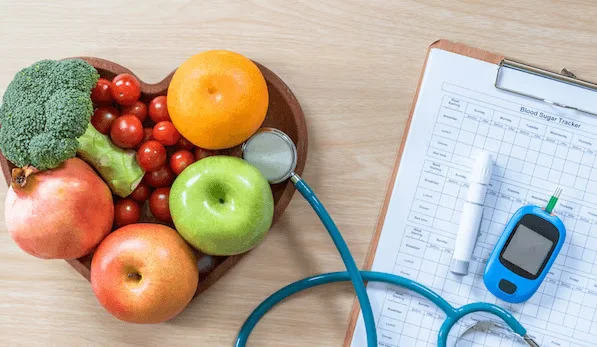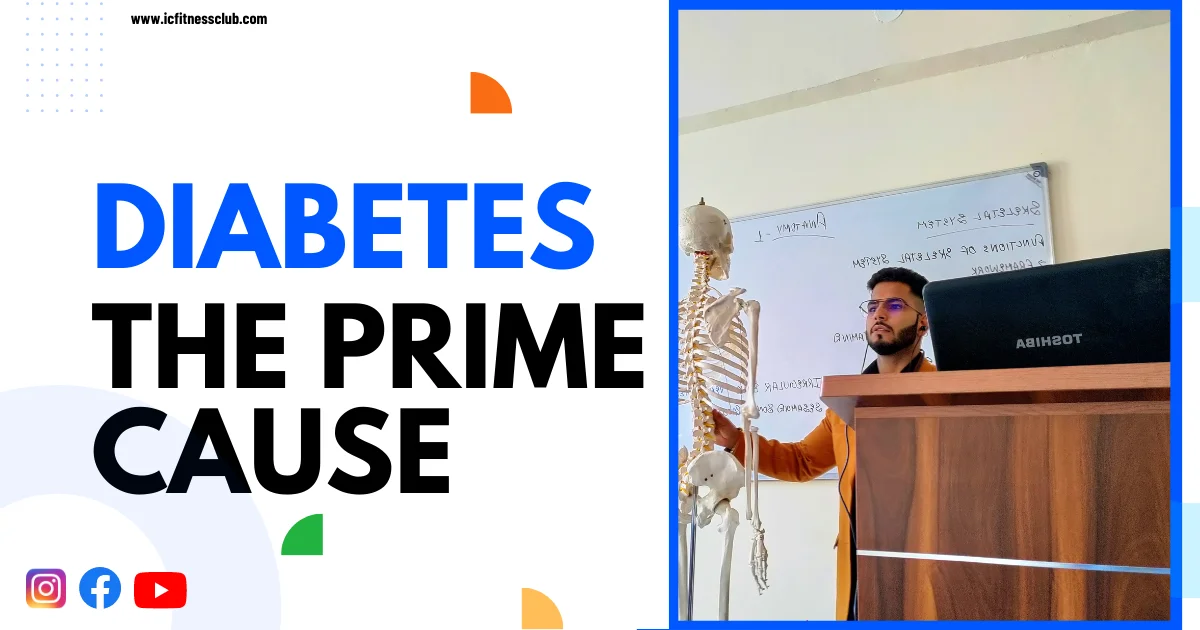Diabetes – The Prime Cause | IC Fitness Club
Diabetes is a chronic condition that affects the way your body processes blood sugar (glucose). Glucose is an important source of energy for your body’s cells, but when you have diabetes, your body either doesn’t produce enough insulin (a hormone that helps regulate blood sugar) or can’t use the insulin it produces effectively. This leads to an accumulation of glucose in your bloodstream, which can cause a variety of health problems over time.
 There are two main types of diabetes:
There are two main types of diabetes:
- Type 1 diabetes: This is an autoimmune condition in which the immune system mistakenly attacks and destroys the insulin-producing cells in the pancreas. Type 1 diabetes typically develops in childhood or adolescence, although it can occur at any age.
- Type 2 diabetes: This is the most common type of diabetes, accounting for about 90% of all cases. Type 2 diabetes occurs when your body becomes resistant to the effects of insulin, or when your pancreas doesn’t produce enough insulin to keep up with your body’s needs.
Other less common types of diabetes include gestational diabetes (which occurs during pregnancy) and monogenic diabetes (which is caused by a mutation in a single gene).
Symptoms of diabetes can include:
- Increased thirst and urination
- Fatigue
- Blurred vision
- Slow healing of wounds or cuts
- Tingling or numbness in the hands or feet
- Unexplained weight loss
Primary Cause of Diabetes
The exact cause of diabetes is not yet fully understood, but there are several factors that can contribute to its development.
Type 1 diabetes is believed to be caused by an autoimmune reaction in which the immune system mistakenly attacks and destroys the insulin-producing cells in the pancreas. The exact trigger for this reaction is not known, but it is thought to be a combination of genetic and environmental factors.
Type 2 diabetes, on the other hand, is believed to be caused by lifestyle factors. Some of the risk factors for type 2 diabetes include obesity, a sedentary lifestyle, a diet high in sugar (carbohydrates) and processed foods, and a family history of the disease.
Tests to check for the Diabetes
There are several tests that can be used to check for diabetes. These include:
- Fasting plasma glucose (FPG) test: This test measures your blood sugar level after an overnight fast of at least 8 hours. An FPG level of 126 mg/dL (7 mmol/L) or higher on two separate occasions indicates diabetes.
- Oral glucose tolerance test (OGTT): This test measures your blood sugar level before and 2 hours after drinking a sweetened liquid. A blood sugar level of 200 mg/dL (11.1 mmol/L) or higher after 2 hours indicates diabetes.
- Hemoglobin A1C (HbA1c) test: This test measures your average blood sugar level over the past 2-3 months. An HbA1c level of 6.5% or higher indicates diabetes.
- Random plasma glucose (RPG) test: This test measures your blood sugar level at a random time, regardless of when you last ate. A blood sugar level of 200 mg/dL (11.1 mmol/L) or higher, along with symptoms of diabetes, indicates diabetes.
If you have risk factors for diabetes or are experiencing symptoms of the disease, your healthcare provider may recommend one or more of these tests. A diagnosis of diabetes requires confirmatory testing on a separate day unless there are clear symptoms of hyperglycemia and a random plasma glucose test result is significantly elevated.
To Become a Certified Personal Trainer,




